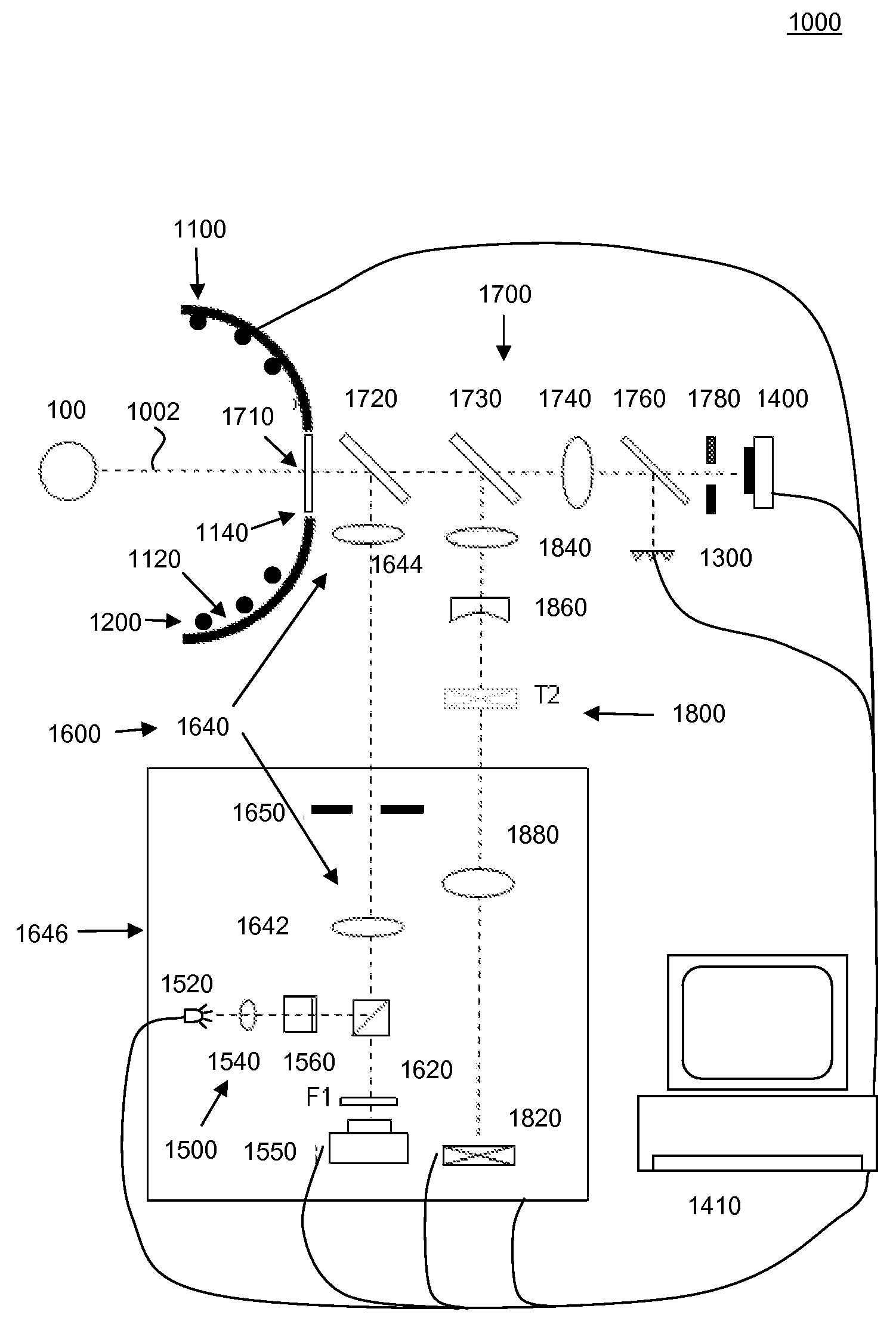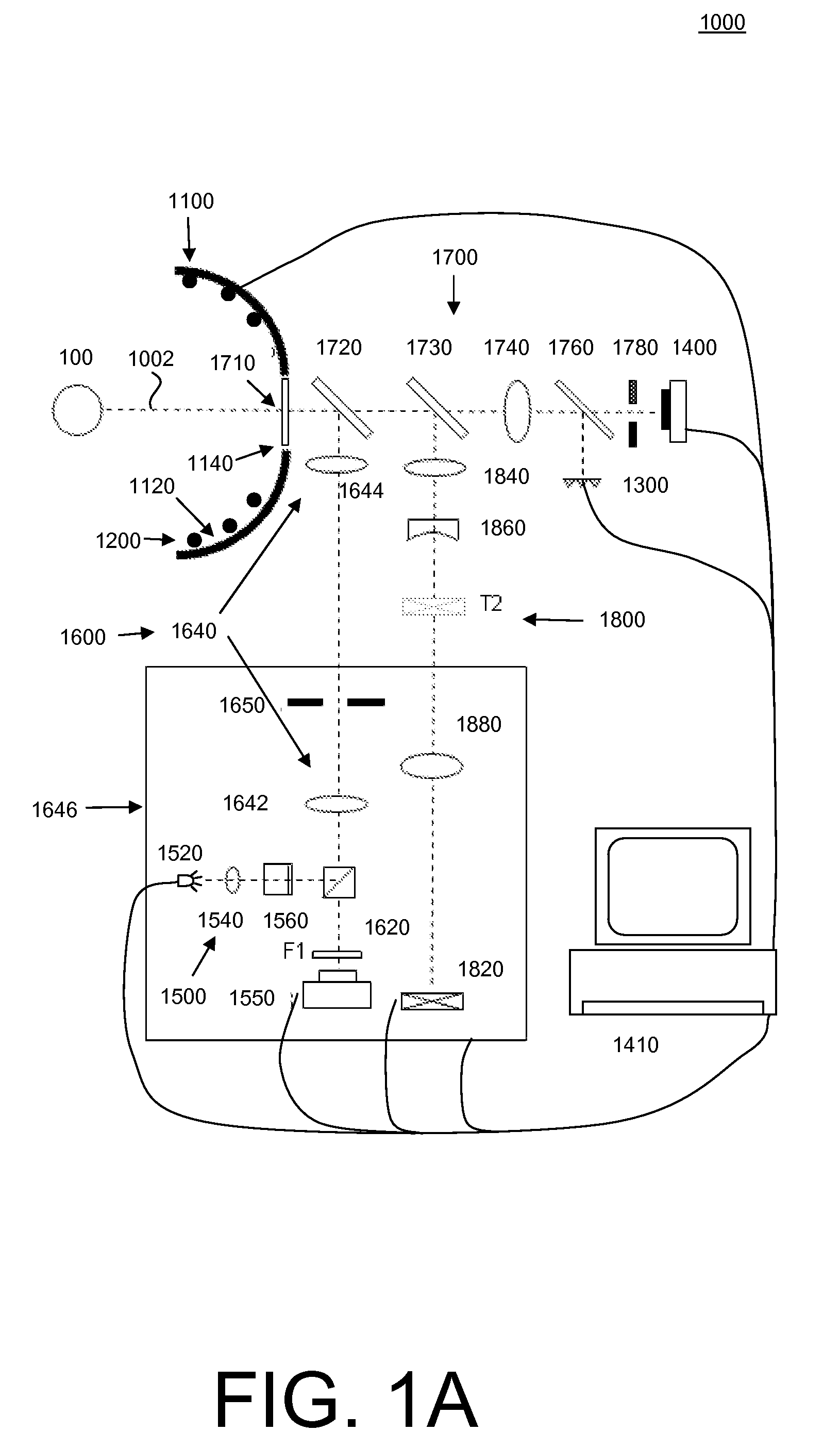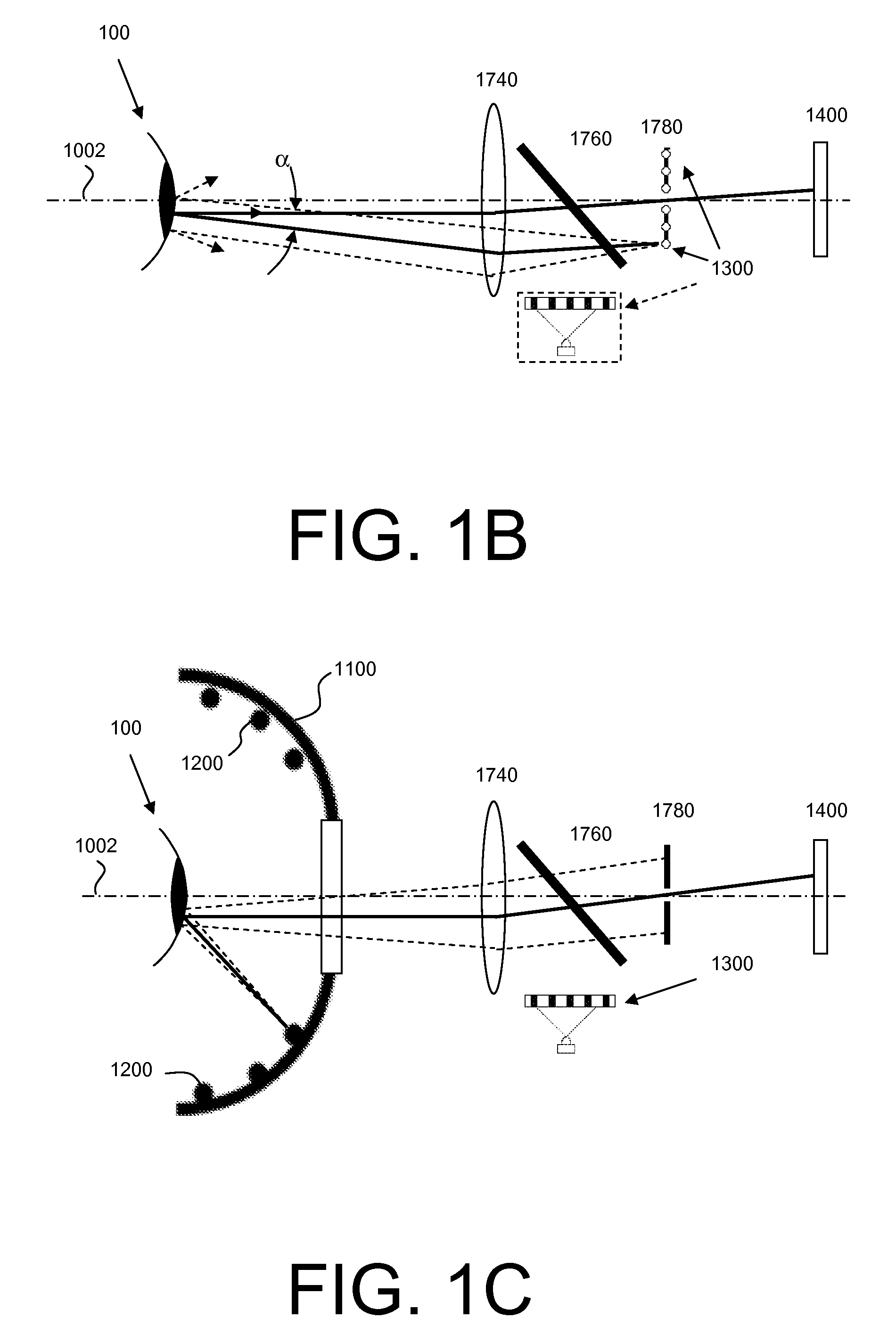System and method for measuring corneal topography
- Summary
- Abstract
- Description
- Claims
- Application Information
AI Technical Summary
Benefits of technology
Problems solved by technology
Method used
Image
Examples
Embodiment Construction
[0034]As discussed above, it would be desirable to provide a combined system for measuring aberrations and a corneal topography of an eye.
[0035]FIG. 1A shows one embodiment of a system 1000 for measuring aberrations and corneal topography of an eye 100. System 1000 comprises a structure 1100 having a principal surface 1120 with an opening or aperture 1140 therein; a plurality of first (or peripheral) light sources 1200 provided on the principal surface 1120 of the structure 1100; a plurality of second, or central, light sources 1300 (also sometimes referred to as “Helmholtz light sources”); a detector array 1400; a processor 1410; a third light source 1500 providing a probe beam; a wavefront sensor 1550; and an optical system 1700 disposed along a central axis 1002 passing through the opening or aperture 1140 of the structure 1100. Optical system 1700 comprises a quarterwave plate 1710, a first beamsplitter 1720, a second beamsplitter 1730, an optical element (e.g., a lens) 1740, a ...
PUM
 Login to View More
Login to View More Abstract
Description
Claims
Application Information
 Login to View More
Login to View More - R&D
- Intellectual Property
- Life Sciences
- Materials
- Tech Scout
- Unparalleled Data Quality
- Higher Quality Content
- 60% Fewer Hallucinations
Browse by: Latest US Patents, China's latest patents, Technical Efficacy Thesaurus, Application Domain, Technology Topic, Popular Technical Reports.
© 2025 PatSnap. All rights reserved.Legal|Privacy policy|Modern Slavery Act Transparency Statement|Sitemap|About US| Contact US: help@patsnap.com



